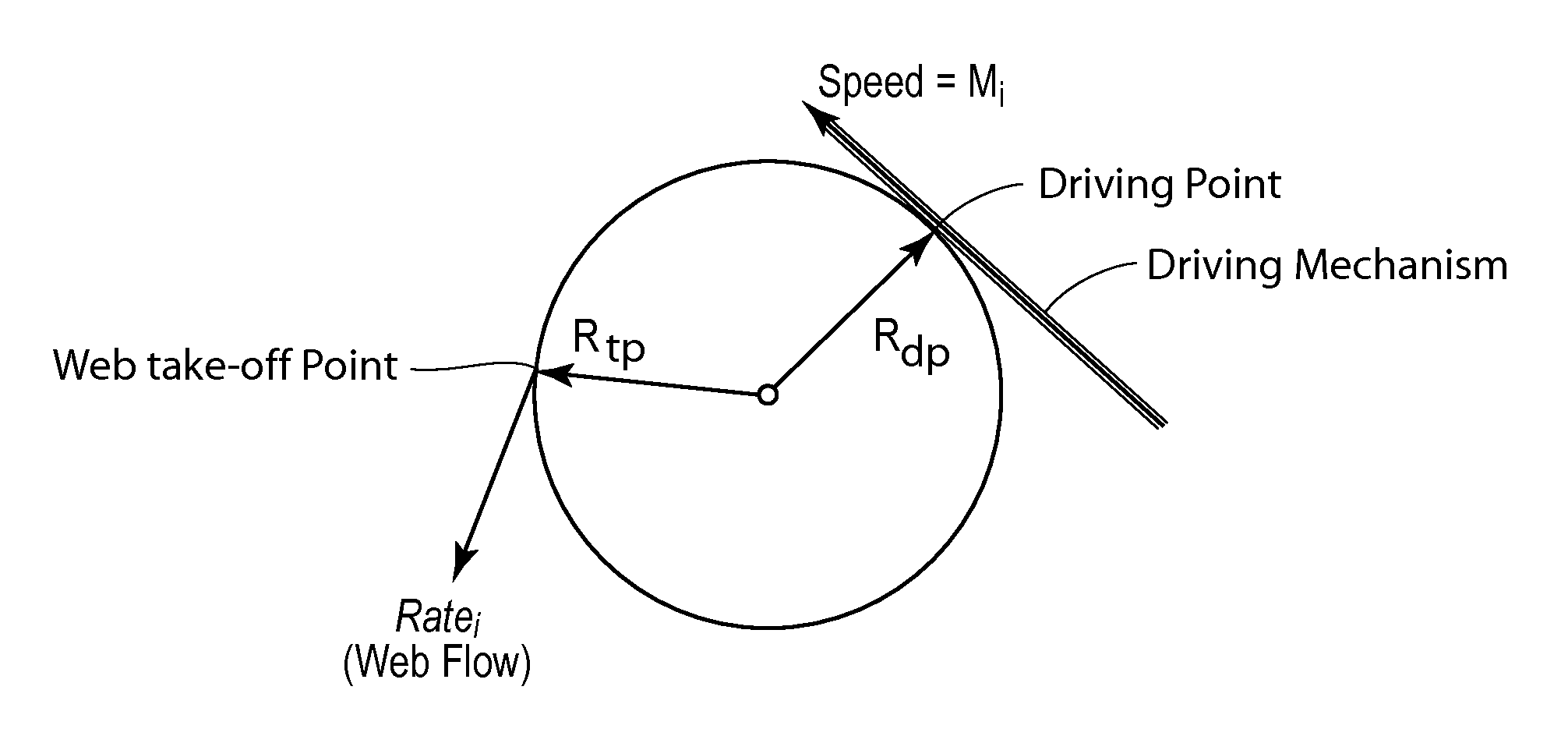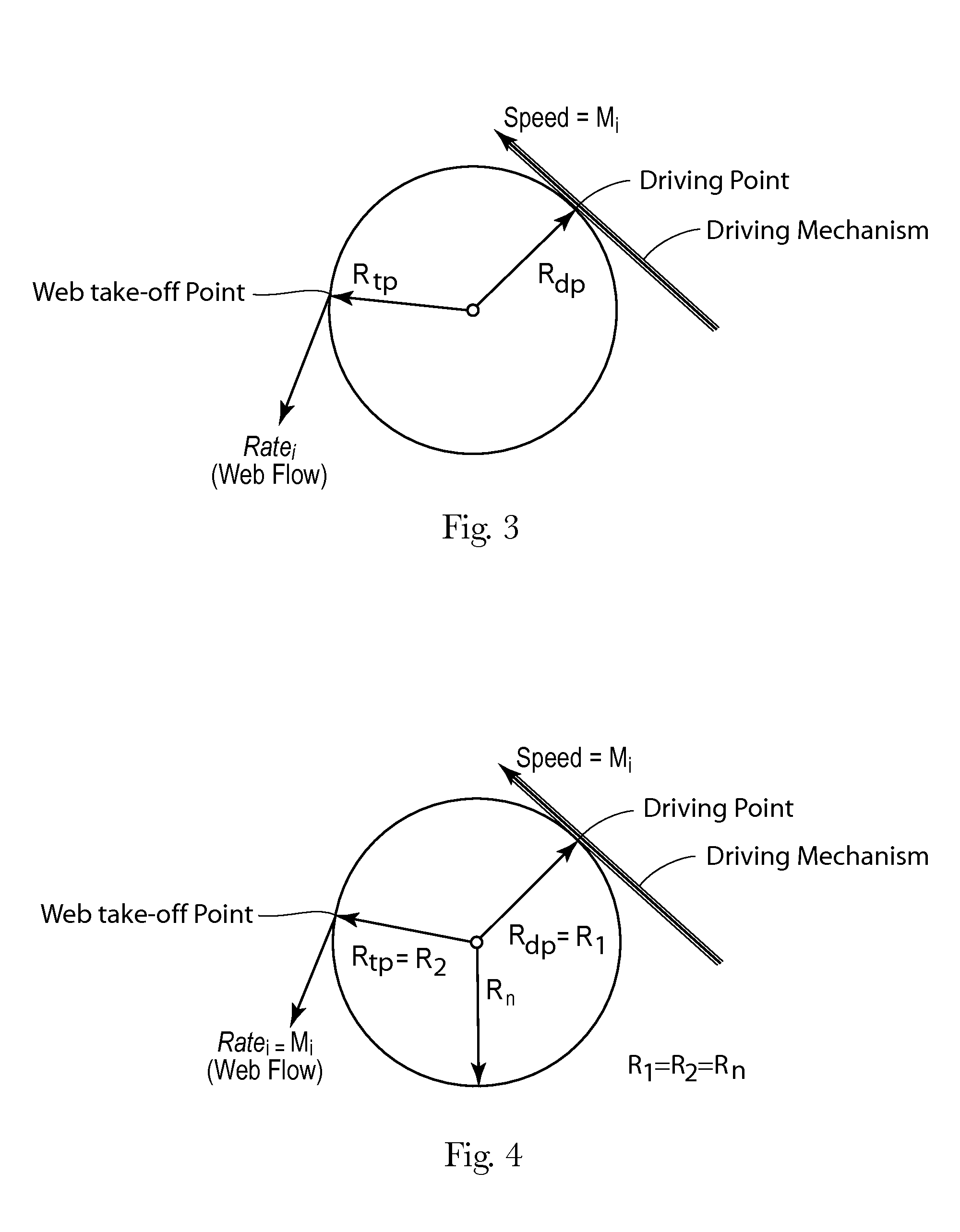Alternative method for reducing web feed rate variations induced by parent roll geometry variations
a technology of geometry variation and web feed, applied in the direction of transportation and packaging, thin material processing, filament handling, etc., can solve the problems of web tension spike and slackening, feed rate variation, and considerable problems, and achieve the effect of reducing or eliminating the feed rate variation of web material at the web takeoff poin
- Summary
- Abstract
- Description
- Claims
- Application Information
AI Technical Summary
Benefits of technology
Problems solved by technology
Method used
Image
Examples
case 1
[0056 is when the major axis of the parent roll, represented by R1 in FIGS. 5 and 6, is orthogonal to the drive point of the parent roll and the minor axis of the parent roll, represented by R2 in FIGS. 5 and 6, is orthogonal to the web takeoff point of the parent roll.
[0057]For illustrative purposes only, it may be assumed that the parent roll started out with the radii at all points about the outer surface of the parent roll equal to 100 units. However, it may also be assumed that due to certain imperfections in the web material and / or roll handling damage, R1=Rdp=105 and R2=Rtp=95. Further, for purposes of illustration it may also be assumed that the driving speed, Mi, of the driving mechanism is 1000 units.
[0058]Substituting these values into Equation 4 [Ratei=Mi×[Rtp / Rdp]] produces:
Ratei=1000×[95 / 105]=904.76 units of web material / unit time
[0059]In this case, the paper converting line was expecting web material at a rate of 1000 units per unit time but was actually receiving web...
case 2
[0061 is when the parent roll has rotated to a point where the major axis, represented by R1 in FIG. 7, is orthogonal to the web takeoff point of the parent roll and the minor axis, represented by R2 in FIG. 7, is orthogonal to the drive point of the parent roll.
[0062]For illustrative purposes only, it can be assumed that the same parent roll described in Case 1 is being used where now R1=Rdp=95 and R2=R4=105, and for illustrative purposes, it may still be assumed that the driving speed, Mi, is 1000 units.
[0063]Substituting these values into Equation 4[Ratei=M×[Rtp / Rdp]] produces:
Ratei=1000×[105 / 95]=1105.26 units of web material / unit time
[0064]In this case, the paper converting line was expecting web material at a rate of 1000 units per unit time but was actually receiving web at a rate of 1105.26 units per unit time.
[0065]For the conditions specified above for illustration purposes only, Case 2 represents the web material feed rate when it is at a maximum value and, consequently, i...
PUM
 Login to View More
Login to View More Abstract
Description
Claims
Application Information
 Login to View More
Login to View More - R&D
- Intellectual Property
- Life Sciences
- Materials
- Tech Scout
- Unparalleled Data Quality
- Higher Quality Content
- 60% Fewer Hallucinations
Browse by: Latest US Patents, China's latest patents, Technical Efficacy Thesaurus, Application Domain, Technology Topic, Popular Technical Reports.
© 2025 PatSnap. All rights reserved.Legal|Privacy policy|Modern Slavery Act Transparency Statement|Sitemap|About US| Contact US: help@patsnap.com



